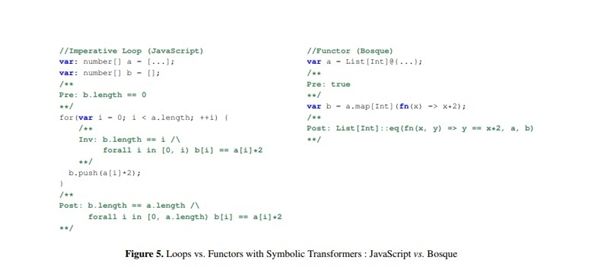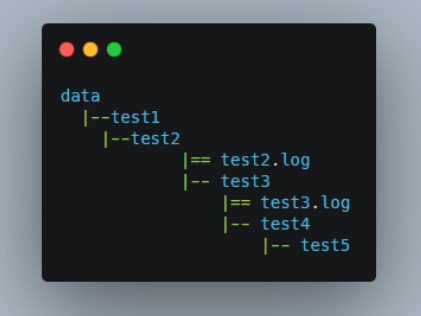swing布局嵌套的例子
 发布于2024-12-26 阅读(0)
发布于2024-12-26 阅读(0)
扫一扫,手机访问
嵌套的 Swing 布局示例
Swing 是一个非常流行的 Java 界面开发工具包,它提供了一系列的布局管理器,用于在图形用户界面中设计和构建组件的布局。本文将介绍一个使用 Swing 布局管理器进行嵌套布局的示例。
在 Swing 中,可以使用多种布局管理器来实现不同的布局效果,例如 BorderLayout、FlowLayout、GridLayout 等。为了实现嵌套布局,我们可以在一个容器内使用多个布局管理器,从而实现复杂的界面布局。下面是一个示例代码,用于展示如何使用 Swing 布局管理器进行嵌套布局:
import javax.swing.*;
import java.awt.*;
public class NestedLayoutExample extends JFrame {
public NestedLayoutExample() {
// 设置窗口标题
setTitle("嵌套布局示例");
// 创建容器
Container container = getContentPane();
// 创建顶层布局
BorderLayout borderLayout = new BorderLayout();
container.setLayout(borderLayout);
// 创建 North 区域的组件
JLabel northLabel = new JLabel("North 区域");
northLabel.setHorizontalAlignment(JLabel.CENTER);
container.add(northLabel, BorderLayout.NORTH);
// 创建 South 区域的组件
JPanel southPanel = new JPanel();
FlowLayout flowLayout = new FlowLayout();
southPanel.setLayout(flowLayout);
JButton southButton1 = new JButton("Button1");
JButton southButton2 = new JButton("Button2");
southPanel.add(southButton1);
southPanel.add(southButton2);
container.add(southPanel, BorderLayout.SOUTH);
// 创建 Center 区域的组件
JPanel centerPanel = new JPanel();
GridLayout gridLayout = new GridLayout(2, 2);
centerPanel.setLayout(gridLayout);
JButton centerButton1 = new JButton("Button1");
JButton centerButton2 = new JButton("Button2");
JButton centerButton3 = new JButton("Button3");
JButton centerButton4 = new JButton("Button4");
centerPanel.add(centerButton1);
centerPanel.add(centerButton2);
centerPanel.add(centerButton3);
centerPanel.add(centerButton4);
container.add(centerPanel, BorderLayout.CENTER);
// 设置窗口大小、位置和可见性
setSize(400, 300);
setLocationRelativeTo(null);
setDefaultCloseOperation(JFrame.EXIT_ON_CLOSE);
setVisible(true);
}
public static void main(String[] args) {
// 创建 NestedLayoutExample 对象
new NestedLayoutExample();
}
}在上面的示例代码中,我们使用 BorderLayout 作为顶层布局管理器,并把容器设置为 BorderLayout 布局。然后,我们在 North 区域添加一个居中对齐的标签,并在 South 区域添加一个 FlowLayout 布局的面板,其中包含两个按钮。最后,在 Center 区域添加一个 GridLayout 布局的面板,其中包含四个按钮。
运行以上代码,你将看到一个窗口,在窗口的上方有一个标签,在下方有两个按钮,中间有一个 2x2 的按钮网格。
总结:
在本文中,我们演示了如何使用 Swing 的布局管理器进行嵌套布局。通过在一个容器中使用不同的布局管理器,我们可以实现灵活多样的界面布局。你可以根据自己的需求使用不同的布局管理器,并通过调整组件的大小和位置来设计出各种复杂的界面布局。希望本文对你理解 Swing 布局的嵌套使用有所帮助。
产品推荐
-

售后无忧
立即购买>- DAEMON Tools Lite 10【序列号终身授权 + 中文版 + Win】
-
¥150.00
office旗舰店
-

售后无忧
立即购买>- DAEMON Tools Ultra 5【序列号终身授权 + 中文版 + Win】
-
¥198.00
office旗舰店
-

售后无忧
立即购买>- DAEMON Tools Pro 8【序列号终身授权 + 中文版 + Win】
-
¥189.00
office旗舰店
-

售后无忧
立即购买>- CorelDRAW X8 简体中文【标准版 + Win】
-
¥1788.00
office旗舰店
-
正版软件
- 介绍MyBatis并分析其特性
- MyBatis简介及特性分析MyBatis是一款优秀的持久层框架,它简化了与数据库的交互过程,提供了强大的SQL映射功能和灵活的查询方式。本文将介绍MyBatis的基本特性,并通过具体的代码示例展示其在实际开发中的应用。一、MyBatis简介MyBatis是一款基于Java的持久层框架,它的设计思想是将SQL语句和Java代码进行解耦,使得开发者可以直接编写
- 6分钟前 特性 mybatis 简介 0
-
 正版软件
正版软件
- Java JAAS的未来展望和发展规划
- JAAS是Java应用程序安全性的重要组成部分。它提供了一种通用的方式来身份验证用户和授权访问资源。JAAS在JavaEE规范中定义,并且是JavaSE的一部分。JAAS的优势包括:可扩展性:JAAS是一个高度可扩展的框架,可以轻松地集成到Java应用程序中。灵活性:JAAS允许您使用各种身份验证和授权机制,包括LDAP、Kerberos和X.509证书。安全性:JAAS提供了一个安全的方式来身份验证用户和授权访问资源。JAAS的未来非常光明。随着Java平台的不断发展,JAAS也将继续发展,以满足Jav
- 16分钟前 认证 访问控制 授权 :JAAS Java 安全性 0
-
正版软件
- 分享Golang构建服务器的技巧和经验
- Golang服务器搭建技巧与经验分享随着互联网技术的不断发展,服务器端编程已经成为许多开发者的必备技能之一。在众多的服务器端编程语言中,Golang(也称为Go语言)凭借其出色的性能和高效的并发机制,越来越受到开发者们的青睐。本文将分享一些关于如何搭建Golang服务器的技巧和经验,并提供具体的代码示例,希望能够帮助读者更好地理解和运用Golang来构建稳定
- 31分钟前 服务器 技巧 Golang 0
-
正版软件
- Go语言的应用领域探索:适用于哪些场景?
- 探索Go语言的适用领域:它适合做什么?Go语言作为一种开发效率高、并发性能优越的编程语言,逐渐在各个领域得到了广泛应用。那么,Go语言适合做什么?本文将从几个具体的领域出发,结合代码示例来探索Go语言的适用性。网络编程Go语言拥有强大的网络编程能力,支持TCP、UDP、HTTP等协议,同时内置了标准库net和http,使用起来非常便捷。下面我们来看一个简单的
- 46分钟前 网络 系统 适用领域:企业 0
-
正版软件
- 优雅处理特殊字符:探索Golang转义字符的奥秘
- 编程中,处理特殊字符是很常见的情况。在Golang中,转义字符是一种非常有效的方式来处理特殊字符,让代码更加清晰和优雅。本文将从Golang的转义字符入手,探讨编程中处理特殊字符的方法,为读者展示编程之美的表现。结合具体的代码示例,帮助读者更好地理解和应用转义字符。1.什么是转义字符在Golang中,转义字符是以反斜杠()开始的特殊字符序列,用于表示一些难
- 1小时前 00:55 Golang 特殊字符 转义字符 0
最新发布
-
 1
1
-
 2
2
-
3
- Vue组件中如何处理图片预览和缩放问题
- 435天前
-
 4
4
-
 5
5
-
 6
6
- Python实战教程:批量转换多种音乐格式
- 606天前
-
7
- WebSocket协议的优势与劣势分析
- 437天前
-
8
- java动态代理实例代码分析
- 607天前
-
 9
9
- java io文件操作删除文件或文件夹的方法
- 604天前
相关推荐
热门关注
-

- Xshell 6 简体中文
- ¥899.00-¥1149.00
-

- DaVinci Resolve Studio 16 简体中文
- ¥2550.00-¥2550.00
-

- Camtasia 2019 简体中文
- ¥689.00-¥689.00
-

- Luminar 3 简体中文
- ¥288.00-¥288.00
-

- Apowersoft 录屏王 简体中文
- ¥129.00-¥339.00